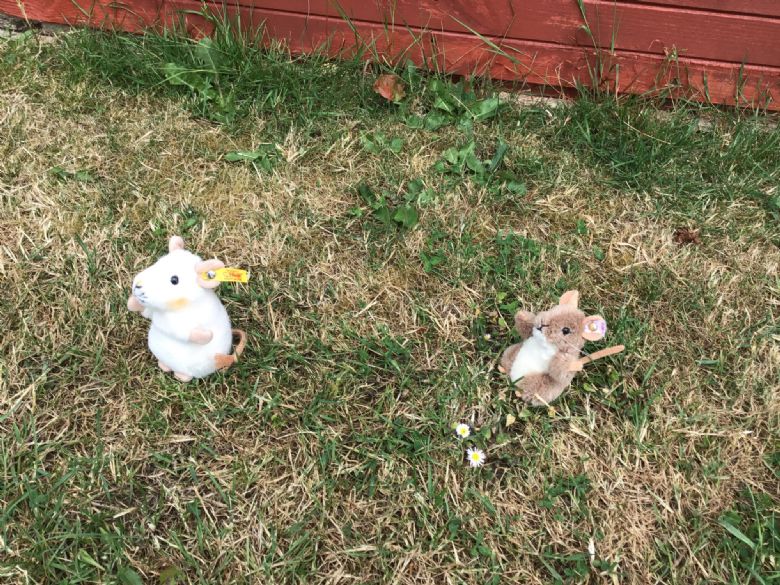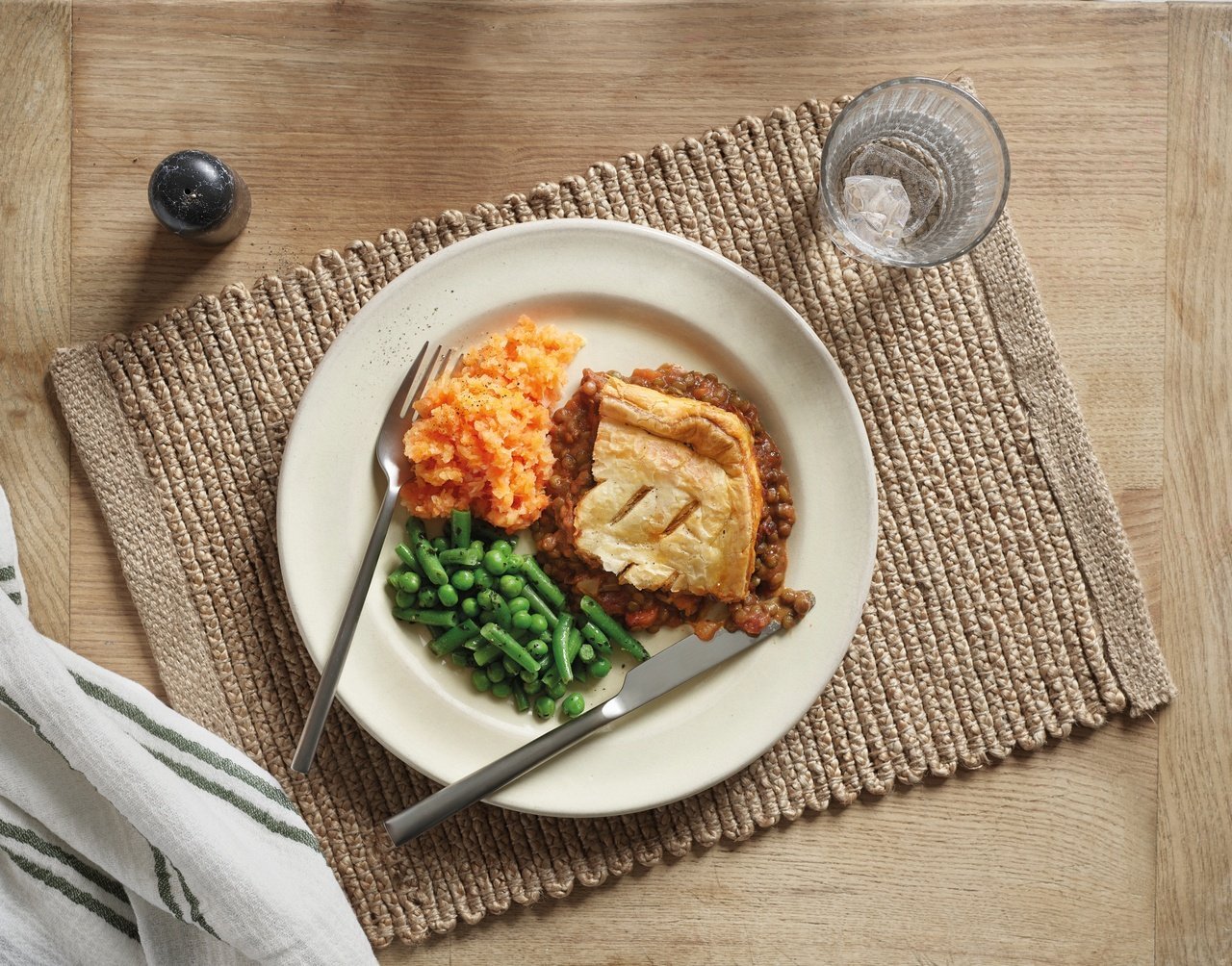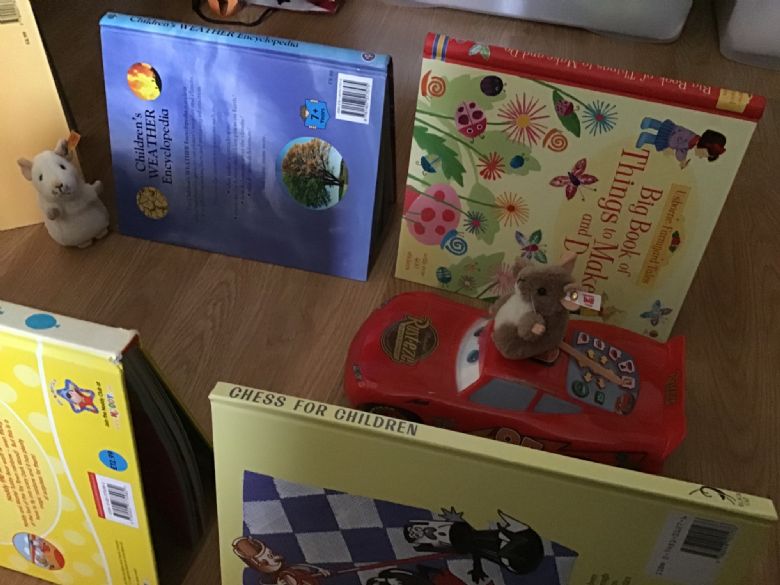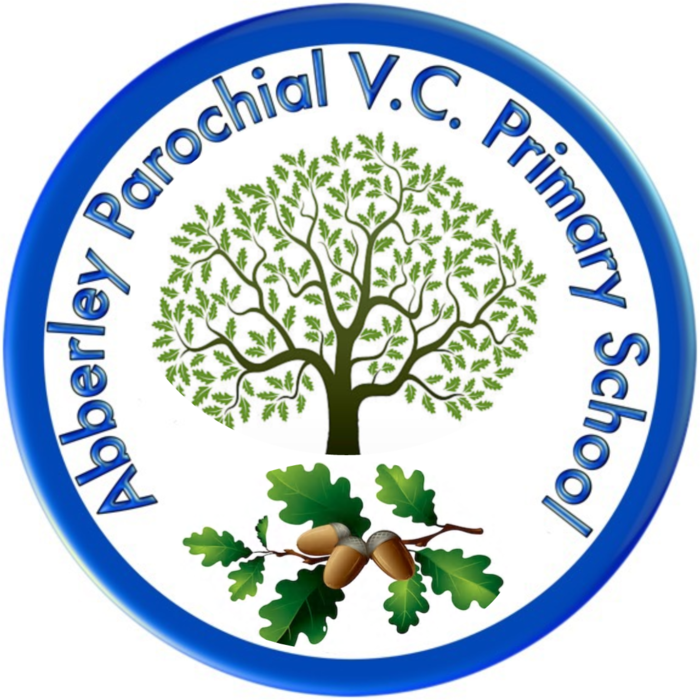Tuesday 9th June
Hello Wrens
Mickey Thompson and Purvis were doing the daily mile around the garden for their exercise today.

Phonics.
Reception.
Warm up.
Can you write our full name in your best handwriting? Don't forget your capital letters at the start of your name because you are important!
Yesterday we learnt about adding letters to the beginning of a word to make a new word and listening carefully to all the sounds when we are reading and writing words. Today we are going to be doing the same activity but this time adding the letters to the end of the word.
Ask your grown up to write the word hum on a piece of paper. Now we are going to add a letter to the end of the word to make the word hump. What letter do you think we are going to have to add?
That's right we have to add an p.
Now try these
ban to bank
ten to tent
win to wind
pan to pant
sun to sunk
Each time we are adding a new letter to the end of the word to make a new word.
Blending for reading.
Click on the link below to access phonics play. Select dragon's den, phase 4, CVCC words set1-7
Segmenting for spelling.
Have a go at cutting and pasting the letters to spell the words using the worksheet below.
Parents - there are several pages to each of these worksheets. Please don't feel you need to do all the pages - just choose one or two of each.
Year 1.
Warm up.
Log onto Phonics play using the link below. Select the pink phase 5 tab and scroll down to Compound Word Splat. Make sure you have a look at the definition of a Compound Word before trying the activity.

Today our sound is ea. This can be pronounced e as in head
or ee as in meal.

Blending for reading.
Using phonics play again. Have a go at the Cheeky Chimps game under the Phase 5 tab making sure you select the ea grapheme.
Segmenting for spelling.
Divide your piece of paper into two columns. On one side draw a seal and on the other side a loaf of bread. Using the list of words below copy the words into the right column depending if they are making a long (ee) or a short (e) sound.
Maths.
Reception.
Yesterday we were learning about directions and when we might use them. We thought about going forwards and backwards and turning left and right.
Take a look at the treasure map attached below. Can you direct the pirate around the treasure map using the directional language that we learnt yesterday?
Today we are going to apply those skills to plan a route through a maze. You can do this on a computer using the instructions below. Alternatively if you have a directional programmable toy at home (similar to a beebot) have a go at building a maze out of lego or some other construction and seeing if you can programme the toy to travel through the maze.

On the computer.
Log onto J2e (JIT5) using the link below.
Select the green turtle tab at the top. Choose your background and use the arrows to direct your "turtle" around the page. You can select to draw a line to show the path your "turtle" has taken. If you press play - you will be able to see the turtle follow the path you have created.
Year 1.
Today we are going to be looking at finding quarters. To find a quarter instead of splitting something into 2 equal parts (a half) we split it into 4 equal parts. Each part is called a quarter. We write it as 1/4 or 1 part out of 4 parts.
Have a look at the powerpoint below to recap halves and look at quarters.
Now have a go at the activities on the sheet below and then try the investigation sheet.
Topic.
Yesterday we found out about Florence Nightingale's life. Today we are going to be thinking a bit more about what the hospitals were like 200 years ago.
Watch the following Magic Grandad video about Florence Nightingale. The video is from 2014 but gives a good idea of the contrasts between modern hospitals and hospitals during Florence's time. Modern hospitals are even more hygienic today. For example the nurse would be wearing gloves and an apron to take a temperature.
Can you remember all the changes that Florence made to make hospitals more healthy and safe?
There is a sorting activity included below (you will need to print off both sheets) to compare hospitals from Florence's time to modern hospitals. If you are in year 1 maybe you can add some of your own sentences to explain the differences.
I think we should be very grateful to Florence. I would certainly prefer to stay in a hospital today rather than one 200 years ago!
Best wishes
Mrs Lightfoot (and Purvis and Mickey Thompson)
